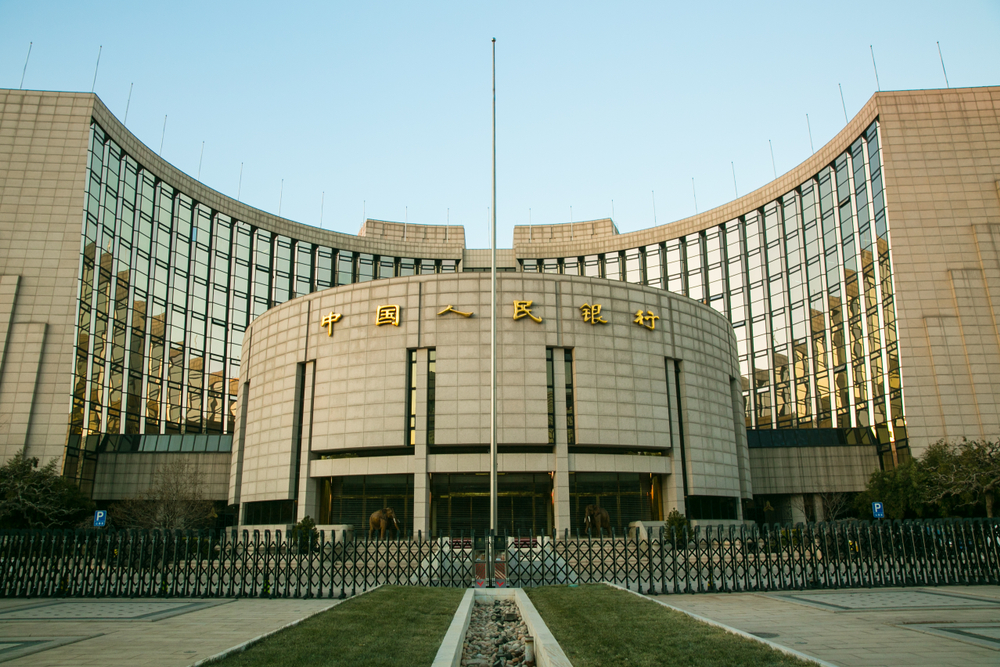As inflation concerns crystallised into punitive monetary policy in 2022, ETF outflows across bonds and equities were informed by drastic swings in bond yields, US dollar strength and even a style rotation.
Headline US Consumer Price Index (CPI) hit a 40-year high of 9.1% last June, sending shockwaves through now-correlated asset classes and prompting the Federal Open Market Committee (FOMC) to increase the Federal Funds Rate at its fastest pace since the turn of the millennia.
As the Fed implemented four consecutive 0.75% rate hikes for the first time in decades, the US dollar surged against other developed market currencies, yields on US Treasuries soared and the valuations of companies relying on low-cost borrowing were given a stiff reality check.
Against this backdrop, 2022 proved to be a sombre year for non-US sovereign debt and other developed market equity ETFs.
China government bonds lose their shine
The biggest casualty in European ETFs last year was the iShares China CNY Bond UCITS ETF (CNYB), which shed a colossal $8.1bn assets after amassing over $10bn the previous year.
CNYB’s fall from grace was a direct result of the US interest rate story. With rates being hiked at an aggressive pace, 10-year US Treasury yields short up from 1.51% at the start of 2022 to 4.16% on 4 November, before Fed Chair Jerome Powell slowed the pace of hiking to 0.50% the following month.
At those elevated levels, US Treasuries were once again back on the table as a yield opportunity and crucially offered a more attractive income opportunity than equivalent Chinese sovereigns, which at the time had a yield of 2.70%.
With BlackRock’s 3-7-and-7-10-year US Treasury ETFs amassing a combined $7.9bn inflows last year, the firm’s iShares China CNY Govt Bond UCITS ETF (CGBI) – which launched in 2021 amid high demand – also saw a $1.7bn exodus.
Interestingly, the slowdown in US rate hikes last December coincided with Amundi launching a China sovereign debt ETF, perhaps in anticipation that demand would return as the US Fed pivots its monetary policy this year.
Europe out of favour
High inflation, a proactive Fed and a strong US dollar also did little for European equities, which had already spent a decade underperforming the high growth of their US counterparts.
In fact, by September, only 27% of European equity ETFs were outperforming the iShares MSCI World ETF (URTH) and just 22% were beating the SPDR S&P 500 ETF (SPY), according to Bloomberg Intelligence. This also followed a decade where Europe equity strategy returns lagged the S&P 500 by 175%, on average.
As a result, European investors pulled $2.5bn from the Xtrackers Euro Stoxx 50 UCITS ETF (XESC) and $1.1bn from the Lyxor EURO STOXX 50 UCITS ETF (MSE) and the iShares MSCI EMU EAG Screened UCITS ETF (SAUM), respectively.
Jose Garcia Zarate, associate director for passive research at Morningstar, commented: “Temporarily, Europe will have fallen out of favour. The short-term outlook for the European economy is hardly bright. War, threats of energy cuts, depreciation of euro and sterling, it is not the best advertising.”
Detlef Glow, head of EMEA research at Refinitiv Lipper, added on the strategic outlook: “One reason for this might be the fact that Europe is seen as the ‘old continent’ with only a limited number of real growth companies compared to the US.
“In combination with the assumption that the US will grow faster than Europe, this might be the reason why European investors preferred to invest in US stocks rather than in European equity.”
Inflation-protected bonds face redundancy
The next casualty of sharp rate hikes were bonds with an inflation-hedging component, given these securities – particularly those of a longer duration – tend to become redundant as interest rates rise.
As a result of this, the Lyxor US TIPS UCITS ETF (TIPH) booked $1.7bn outflows in 2022 while investors pulled $1.3bn from the Lyxor 2-10Y Inflation Expectations UCITS ETF (INFL).
Instruments such as Treasury Inflation-Protected Securities (TIPS) may offer some shelter from rising inflation, however, they will take a hit due to their duration component like any other fixed income asset when monetary policy turns hawkish.
As Seattle-based discretionary wealth manager Verus Investments explained: “If inflation remains constant and rates rise, as is often the case, holding TIPS will not compensate the investor and will result in just as much interest rate risk as other fixed income instruments; since notional principal and coupon payments remain the same (unchanged inflation means no adjustment to principal).”
Offloading ESG smart beta
A final and likely predictable shift by European investors was a shift in factor allocations, however, it was green-tinted smart beta ETFs that failed to gain favour with European investors.
Leading the outflows were the iShares MSCI USA Momentum Factor ESG UCITS ETF (IUME) and iShares MSCI USA Value Factor ESG UCITS ETF (IUVE), with exoduses of $1.2bn and $1.1bn respectively.
ESG strategies, in general, underperformed in 2022 due to their underweight to energy sector stocks, with oil and gas producers soaring as fossil fuel prices hit 15-year highs last year.
While IUME’s vanilla cousin shifted decisively towards traditional energy stocks in 2021 – currently awarding the sector a 24.4% allocation – the ESG ETF’s allocation stands at less than half of that, at 10.9%.
Even more drastic, IUVE awards energy an allocation of just 0.7%, meaning it almost entirely missed one of the sector’s strongest years of performance.
Related articles





